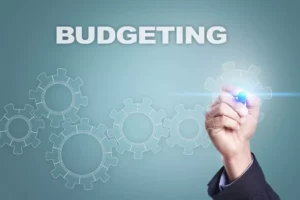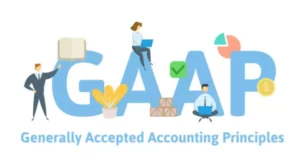Sales forecasting is one of any organization’s most critical activities, as it allows you to plan staffing requirements and capital flows for trading. Despite the importance of such calculations, many enterprises use outdated technologies that create poor commercial predictions.
How reliable are sales forecasts? According to Gartner research, 55% of commercial leaders and 57% of quota-carrying firms are unsure about their retail predictions. If a leader thinks the company’s financial situation will change soon, then according to Gartner’s calculations, even by 2025, 90% of commercial companies will rely on intuition rather than advanced analytics or customer relationship management (CRM) systems when making predictions, limiting the creation of exact forecasts. In this blog, we will talk about why forecasting is vital for the rise of an enterprise and how to make high-quality commercial plans.
What is sales forecasting?
A sales forecast is a procedure that evaluates the potential earnings a company may generate during a specific time frame. In a B2B system, this is the historical data-backed practice of calculating sales profits over time. It includes evaluating real-time commercial information, calculating business performance, and comparing predicted and actual capital inflows.
Such calculations usually rely on historical information, the current situation in the area, and external information that reflects industry tendencies and market conditions.
If you have historical insights, it will be simpler to make predictions, but even new organizations can profit from the proper estimations.
It is essential to understand there is no 100% accurate sales forecast. It is at planning instrument that allows enterprises to prepare for future dangers and opportunities.
Why is sales forecasting critical?
Precise sales forecasting is the key to the prosperity of an enterprise. It enables you to make effective decisions and notice potential threats before they destroy your organization. Consider other benefits of forming commercial plans:
- Goal setting: allows firms to set realistic objectives. An enterprise can define its goals by studying past information, current market conditions, and business potential.
- Resource allocation: commercial forecasts are critical to successful resource management. By creating commercial plans, firms may decide where and how much to invest for optimal results.
- Investor relations: a clear sales plan will show potential investors the firm understands its industry and growth opportunities. It can be a significant argument in favor of investing in an enterprise.
- Risk mitigation: identifying potential challenges in commercial predictions allow organizations to mitigate risk proactively. It may involve the creation of different product lines, the development of new markets, and changes in pricing algorithms.
What can happen if you do not utilize the forecasting process? In the worst case, you may expect cash flow challenges, the need to lay off many employees, and even bankruptcy, as the enterprise’s management spends significant amounts without understanding what awaits them in the future.
Sales forecasting techniques
Although different firms have different structures and commercial procedures, most usually use one or more approaches to commercial predicting. We will examine several popular forecasting techniques using simple estimates and more complex processes.
Historical predicting
This technique involves the study of insides from past intervals. Let’s say your firm made $15,000 in sales last month, so you can assume the same numbers will be in this period.
To create more accurate predictions, consider the change in revenue over time. Let’s assume that for the last three months, the income was:
- $13,000 in May
- $14,000 in June
- $15,000 in July.
With sales volumes increasing by $1,000 per month, this trend can be expected to continue.
Opportunity phase prediction
This forecasting technique assesses the likelihood of closing a deal depending on the funnel stage at that moment. There is a rule of thumb that deals farther down the funnel are more likely to close. You may examine your historical performance data and make predictions.
Suggest, last month, the amount of identified leads: was 240, while the sum of closed deals was 60. To comprehend how many identified leads can be closed, you need 240/60*100% = 40%. It means there is a 40% chance that leads found now will close the deal.
Prediction with multiple variables
Sales results depend on various factors, meaning errors can occur when solely relying on the simple calculations described above.
The multi-variable predicting method considers several factors, resulting in greater prediction accuracy because it involves more mathematics and less intuition. Consider the main factors you should add to the forecast:
- Percentage of deals closed by different sales representatives for a specific time interval.
- The estimated value of the transaction in dollars, considering the client’s needs.
- The number of days remaining until the end of the period.
- The stage of the sales funnel where the lead is located.
To perform calculations, we recommend using CRM software. It works with complex formulas and considers different points, which provides a more exact forecast.
Who is responsible for sales predictions?
Commercial predicting is a critical job for any enterprise. Without such plans, it is difficult to make the right decisions about inventory, recruiting, marketing, and other areas of development. Although salespeople often make predictions, other professionals can be involved in this procedure.
At the initial stage of forecasting, it is necessary to collect information from various sources, including financial documents, communication with clients, market analysis, etc. Once information is collected, it must be studied to determine tendencies. It is the responsibility of sales managers.
After analyzing insights, it is necessary to compute future demand. Sales leaders do such work. They successfully apply their industry knowledge and information to generate commercial targets for future periods.
When the trading goals are ready, you must transfer them to the sales representative for execution. They must develop commercial tactics and methodologies to ensure goals are achieved.
Commercial success depends on the accuracy of the information and the ability of the sales team to implement innovative practices. If any of these are missing, it could affect the enterprise’s profitability.
Sales forecasting tips
Making commercial forecasts means predicting an enterprise’s future sales and earnings. While procedures may vary depending on your field and job circumstances, we have developed a general framework to assist you in developing commercial predictions.
Set up commercial activity
Unless you have implemented a single sales process for your entire organization, it won’t be straightforward to compute the probability of closing deals. The fact is that the commercial process defines the standard stages of opportunity in the sales funnel.
Your commercial reps must clearly define each phase of the sales funnel. This way, your predictive information will be as exact as possible, and the commercial team will understand how to work with leads in different trading cycles.
Define commercial quotas
You won’t know if your plan is working without setting sales targets. The whole team should have a common goal, but it is also necessary to set personal goals for each salesperson.
The simplest option is to study the historical results of representatives and interact with them to calculate and adjust plans. In this way, you may create a point of reference that can be compared with the forecast to make adjustments without waiting for the period to end.
Add CRM structures
Your predictions are only as good as the data they are based on. If you rely only on evaluations and assumptions, then the future of the business remains bleak.
Regular implementation of CRM systems provides access to information in real-time. You may reallocate resources in time if you understand the sales funnel accurately.
Define forecasting technology
After implementing a single commercial procedure, quotas, and CRM, you should choose a sales forecasting technique. The choice of technology depends on the company’s age, the number of employees, the quality of information, and the habit of monitoring data.
Successful forecasting means finding the right balance: it should be detailed enough to be useful but not overly complicated to handle.
Examine past sales forecasts
If your firm has previously generated commercial predictions, you may utilize this information as a starting point. Compare actual information with past forecasts to evaluate the performance of the sales department, determine which fields need improvement, how realistic the aims set were, etc.
Check and update forecasts regularly
Market conjuncture, sales techniques, and other factors may change, negatively impacting your forecast’s quality. Regular checks will enable you to change predictions, consider new information, and maintain its accuracy.
Basic predictions errors
Sales professionals must actively engage in forecasting. In a highly competitive and volatile market environment, expectations from sellers are rising, and predictions are essential in tracking buyer activity and enterprise health. Unfortunately, many businesses make the following mistakes during forecasting:
- Refusal from studying historical data: one of the most vital things you can do when planning sales is to research information about past deals. It will create a full picture of what to expect from the area. It is also essential to be mindful of any changes that have taken place in the business if they may change shipping volumes.
- Utilize manual labor: according to research, sales representatives spend approximately 2.5 hours a week on forecasting, and their managers spend up to 1.5 hours. The implementation of automation enables you to spend this time on actual trading.
- Ignoring the seasonality of commodities: sales volumes may vary significantly in different periods. If you deal with products in demand during specific periods, this should be reflected in commercial forecasts.
Many specialists strive to provide positive dynamics, so they often overestimate the number of transactions that can be completed. Coincidentally, 79% of business firms report their predictions typically fall short of reality by more than 10%. At the same time, 54% of transactions that sales representatives expect remain unclosed.
Final thoughts
Now that you comprehend the power and importance of sales forecasting, it’s time to put this knowledge into practice. If you lack experience creating commercial predictions, we recommend you contact BooksTime for help.
Our experts are ready to know everything about commercial planning, resources, and budget. Whether you’re a startup looking to engage investors or an established enterprise looking to increase profit, BooksTime has the instruments to assist you in achieving your aims.



















